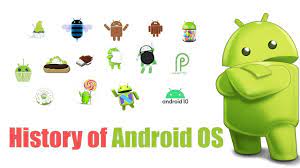Revolutionising Communication: The Evolution of the Phone
The Evolution of the Phone
From Alexander Graham Bell’s invention of the telephone in 1876 to today’s sophisticated smartphones, the evolution of the phone has been nothing short of remarkable. What started as a simple device for voice communication has transformed into a multi-functional tool that has revolutionised how we communicate, work, and live.
Early telephones were bulky and limited to wired connections, allowing users to communicate only through voice calls. Over time, advancements in technology led to the development of cordless phones, which provided greater mobility within a limited range.
With the advent of mobile phones in the late 20th century, communication reached new heights. These portable devices allowed users to make calls from anywhere, paving the way for instant connectivity on the go. The introduction of text messaging further expanded communication options, enabling quick and convenient exchanges of information.
Fast forward to today, and we have smartphones that are essentially mini-computers in our pockets. These devices offer a plethora of features beyond basic communication, including internet access, social media integration, photography capabilities, and countless apps for productivity and entertainment.
Smartphones have become an indispensable part of modern life, blurring the lines between personal and professional use. They have transformed how we work, play, shop, learn, and stay connected with others. With each new iteration of smartphone technology comes enhanced performance, innovative features, and sleek designs that continue to shape our digital world.
As we look towards the future, it is clear that the evolution of the phone is far from over. With developments in artificial intelligence, augmented reality, 5G connectivity, and more on the horizon, we can expect phones to become even more powerful tools that will further redefine how we interact with technology and each other.
Whether it’s a historic rotary phone or the latest flagship smartphone model, one thing remains certain – the phone will continue to evolve and adapt to meet our ever-changing needs in this fast-paced digital age.
Top FAQs on Choosing and Purchasing Mobile Phones in the UK
- Which phone is best to buy now?
- Which phone is best till now?
- Which phone is the latest phone?
- Which is the best site to buy mobile phones UK?
- Which Samsung phone is best to buy?
- Which phone is very cheapest?
- What are top 5 mobile phones?
Which phone is best to buy now?
When asking the question “Which phone is best to buy now?” it’s important to consider your specific needs and preferences. The answer can vary depending on factors such as budget, desired features, operating system preference, brand loyalty, and more. Researching current smartphone models, reading reviews, comparing specifications, and considering your usage patterns can help you make an informed decision. Ultimately, the best phone for you is one that aligns with your individual requirements and offers the features that matter most to you.
Which phone is best till now?
When it comes to the question of which phone is the best till now, the answer is highly subjective and dependent on individual preferences and needs. With a vast array of smartphones available in the market, each offering unique features and capabilities, determining the “best” phone is a matter of personal choice. Some users may prioritise camera quality, others may value battery life or performance. Factors such as operating system preference, design aesthetics, brand loyalty, and budget all play a role in selecting the ideal phone for each user. Ultimately, the best phone till now is the one that meets your specific requirements and enhances your overall mobile experience.
Which phone is the latest phone?
The question “Which phone is the latest phone?” is a common inquiry among consumers seeking to stay updated on the newest releases in the ever-evolving world of mobile technology. With smartphone manufacturers constantly unveiling new models boasting advanced features and capabilities, it can be challenging to pinpoint the absolute latest phone at any given moment. To determine the most recent device, one may need to consider factors such as release dates, manufacturer announcements, and market availability. Keeping abreast of tech news and official sources from leading phone brands can help individuals identify the cutting-edge handset that fits their needs and preferences.
Which is the best site to buy mobile phones UK?
When looking for the best site to buy mobile phones in the UK, it’s essential to consider factors such as reputation, product selection, pricing, customer service, and after-sales support. Popular online retailers like Amazon, Currys PC World, and John Lewis are known for their wide range of mobile phones, competitive prices, and reliable services. Mobile network operators such as EE, O2, Vodafone, and Three also offer a variety of devices with tailored contract options. Additionally, dedicated mobile phone retailers like Carphone Warehouse provide expert advice and assistance in choosing the right phone for your needs. Ultimately, the best site to buy a mobile phone in the UK will depend on your preferences regarding pricing, product availability, customer service quality, and any specific requirements you may have.
Which Samsung phone is best to buy?
When considering which Samsung phone is best to buy, it ultimately depends on your specific needs and preferences. Samsung offers a wide range of smartphones catering to different budgets, features, and performance levels. The flagship Samsung Galaxy S series is known for its cutting-edge technology, high-quality cameras, and sleek design, making models like the Galaxy S21 or S21 Ultra popular choices for those seeking top-of-the-line features. On the other hand, the Galaxy A series provides more affordable options without compromising on essential features such as decent performance and good camera quality. To determine the best Samsung phone for you, consider factors such as budget, desired features like camera quality or battery life, and whether you prefer a premium flagship model or a more budget-friendly option.
Which phone is very cheapest?
When it comes to finding the most affordable phone on the market, the question of “Which phone is very cheapest?” often arises. The answer to this query can vary depending on various factors such as brand, specifications, and current promotions. Budget-friendly smartphone options from lesser-known brands or older models from reputable manufacturers may offer competitive prices. However, it is essential for consumers to consider not only the upfront cost but also factors like quality, performance, and long-term value when selecting a budget phone that meets their needs while staying within their budget constraints.
What are top 5 mobile phones?
When it comes to the top mobile phones in the market, the list is often subjective and can vary based on individual preferences and needs. However, some of the consistently highly-rated smartphones include models such as the latest iPhone from Apple, flagship devices from Samsung’s Galaxy series, Google Pixel phones known for their camera quality, OnePlus smartphones for their performance and value, and Huawei devices with innovative features. These top 5 mobile phones typically offer a combination of cutting-edge technology, impressive design, high-quality cameras, powerful performance, and user-friendly interfaces that cater to a wide range of users.












